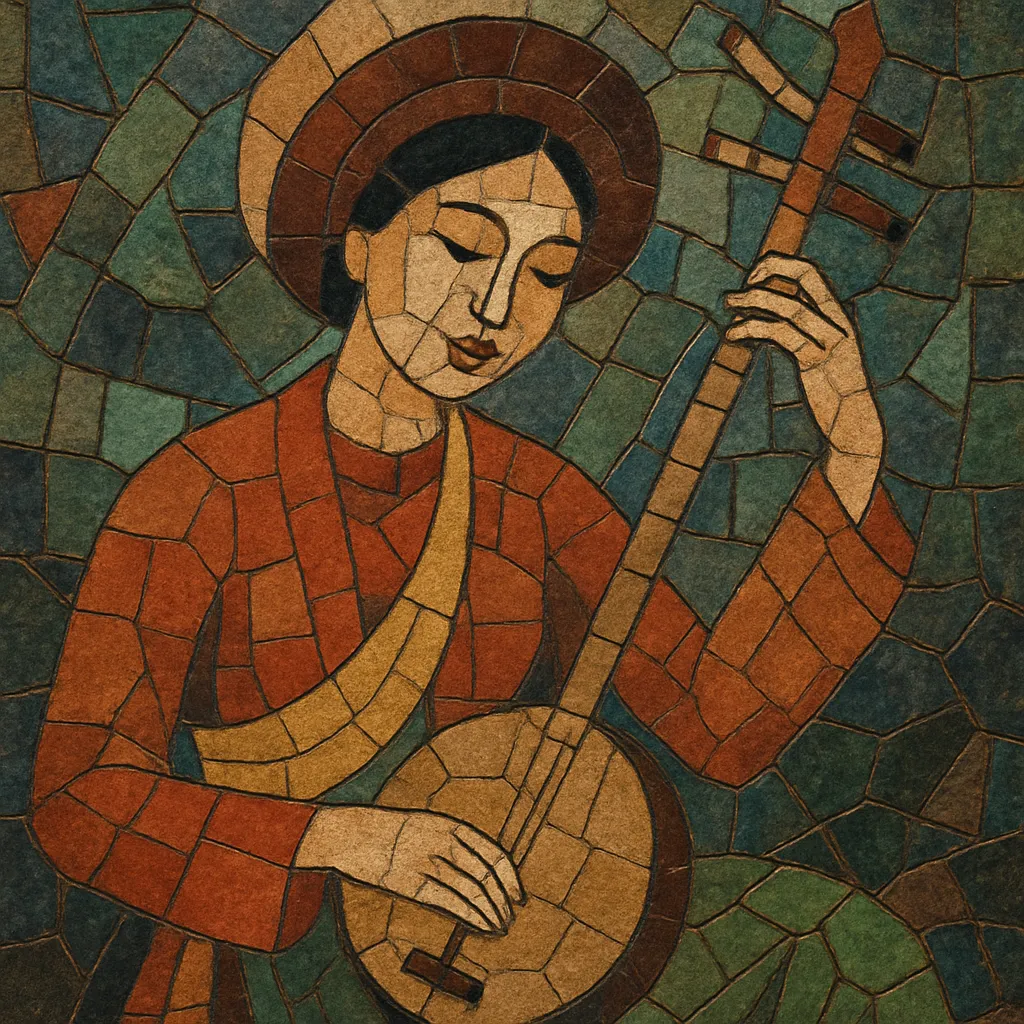Chèo is a traditional Vietnamese folk opera that blends sung poetry, stylized acting, dance, mime, and satirical comedy. Originating in the villages of northern Vietnam, it was historically performed in communal courtyards (đình) with minimal scenery, inviting active audience participation.
Its musical language is pentatonic and modal, articulated through a flexible heterophonic texture led by voice and a small ensemble. Hallmark vocalism features an expressive, nasal timbre with rich ornamentation (luyến láy), while stock characters and codified gesture-language convey emotion and plot. The genre’s famed comic jester (hề chèo) supplies wit, social critique, and improvisation, making chèo both entertaining and subversively reflective of village life.
Accompaniment commonly includes đàn nhị (two-string spike fiddle), đàn nguyệt (moon lute), đàn bầu (monochord), sáo trúc (bamboo flute), small percussion such as phách and song loan, and drums like trống cơm. Canonical plays—such as Quan Âm Thị Kính, Lưu Bình Dương Lễ, Trương Viên, and Kim Nham—combine moral narratives with humor, romance, and pathos.
Chèo is widely traced to the Lý dynasty (11th century) in northern Vietnam, where women performers and courtly entertainers brought sung drama to village festivals. Legendary figures such as Phạm Thị Trân are credited in oral histories as foundational artist-pedagogues who shaped early performance practice. From the start, chèo thrived outside palace walls, in communal courtyards (đình) and open-air settings, emphasizing direct connection with villagers.
By the late medieval period, a repertory of stock roles and music-dramatic "làn điệu" (melodic types) had coalesced—tragic heroines (đào thương), coquettish maidens (đào lệch), elderly and authority figures (lão, mụ), villains (nịnh), and, centrally, the jester (hề chèo). The jester’s extemporized satire made chèo a vehicle for social commentary. Music remained modal and pentatonic, performed by a compact ensemble (đàn nhị, đàn nguyệt, đàn bầu, sáo trúc, small percussion), accompanying stylized recitative, arias, and choreographed movement.
Over centuries, chèo coexisted and cross-pollinated with other Vietnamese forms—most notably tuồng (hát tuồng) and later ca trù chamber singing—while maintaining its distinctly folk, satirical identity. Although courtly traditions absorbed stronger Sino-theatrical traits, chèo retained vernacular language, village humor, and participatory staging.
During the 20th century, urbanization and new media reshaped performance contexts. After 1945, professional troupes were institutionalized, new works were commissioned, and classic scripts were edited for proscenium stages. While modern dramaturgy introduced lighting, scenography, and expanded orchestration, the essence—modal singing, codified gesture, and the hề’s topical wit—remained central.
Today chèo is sustained by national and provincial theatres, conservatories, and community troupes. Revivals of canonical plays sit alongside new creations addressing contemporary issues, keeping the genre’s blend of music, satire, and moral storytelling alive for modern audiences.


